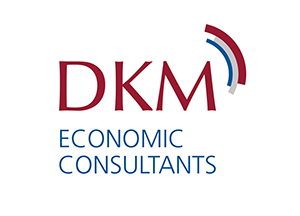Euroconstruct conference comes to Dublin
European construction prospects in a low interest rate environment
 The European construction market is large, growing, diverse, and exciting, but it is not immune from the impacts of global financial turbulence. It can be frustrating for companies seeking work when projects are put on hold, or cancelled because of financial circumstances. Winning work is the lifeblood of the industry, but it is subject to events outside its own control. In this turbulent and unpredictable environment, there are lots of opportunity for forward-thinking and innovative organisations prepared to think differently about project creation and project delivery. These issues and others will be debated at the forthcoming 81st Euroconstruct Conference which is coming to the Aviva Stadium Conference Centre in Dublin on June 9th and 10th 2016.
The European construction market is large, growing, diverse, and exciting, but it is not immune from the impacts of global financial turbulence. It can be frustrating for companies seeking work when projects are put on hold, or cancelled because of financial circumstances. Winning work is the lifeblood of the industry, but it is subject to events outside its own control. In this turbulent and unpredictable environment, there are lots of opportunity for forward-thinking and innovative organisations prepared to think differently about project creation and project delivery. These issues and others will be debated at the forthcoming 81st Euroconstruct Conference which is coming to the Aviva Stadium Conference Centre in Dublin on June 9th and 10th 2016.
The Euroconstruct Network consists of a group of research organisations who undertake construction market analysis and forecasting. Established in 1974, today the network has member institutes in 19 countries across Western, Central and Eastern Europe. DKM Economic Consultants, as the Irish member of Euroconstruct, are delighted to announce that they are hosting the conference this year.
 The overarching theme for the conference is “European Construction Prospects in a Low Interest Rate Environment”. The conference will address the key medium-term challenges facing the industry and provides the latest construction projects to 2018. It will bring together key players across the sector by providing essential industry information and networking opportunities. The conference is important for both buyers and sellers active in the construction markets of Europe and beyond, including suppliers of materials, equipment and construction services, and international customers, including builders, contractors and project managers.
The overarching theme for the conference is “European Construction Prospects in a Low Interest Rate Environment”. The conference will address the key medium-term challenges facing the industry and provides the latest construction projects to 2018. It will bring together key players across the sector by providing essential industry information and networking opportunities. The conference is important for both buyers and sellers active in the construction markets of Europe and beyond, including suppliers of materials, equipment and construction services, and international customers, including builders, contractors and project managers.
You will find information on the
• speakers
• programme
• the drinks reception
• networking dinner at the famous Guinness Storehouse (9th June)
• the venues and registration for this event at www.euroconstructdublin.com
DKM Economic Consultants
6 Grand Canal WharfSouth Dock Road, Ringsend, Dublin 4
Tel: +353 1 6670372
Web: www.dkm.ie
Email: info@dkm.ie





